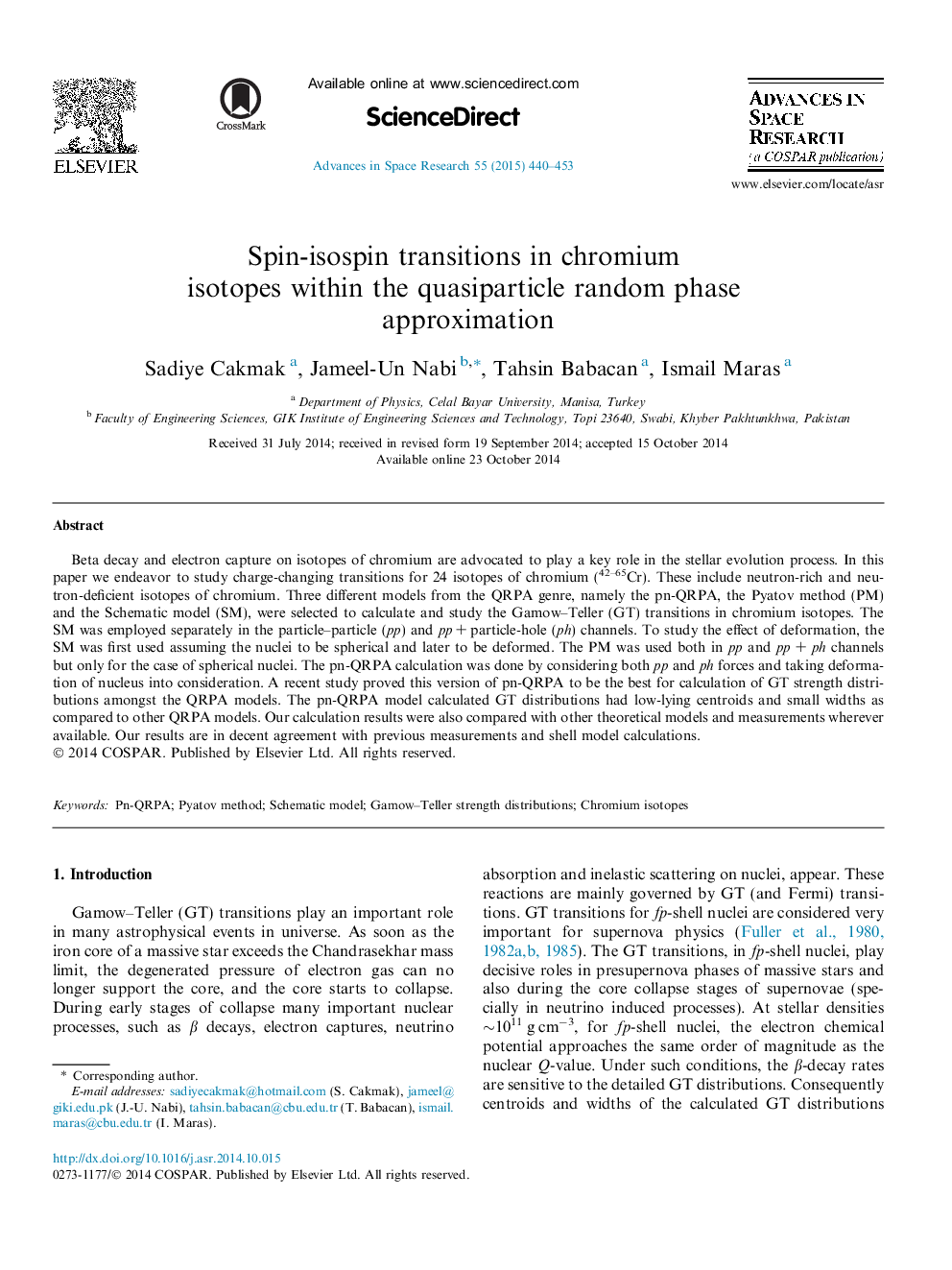| Article ID | Journal | Published Year | Pages | File Type |
|---|---|---|---|---|
| 1764145 | Advances in Space Research | 2015 | 14 Pages |
Beta decay and electron capture on isotopes of chromium are advocated to play a key role in the stellar evolution process. In this paper we endeavor to study charge-changing transitions for 24 isotopes of chromium (42–65Cr). These include neutron-rich and neutron-deficient isotopes of chromium. Three different models from the QRPA genre, namely the pn-QRPA, the Pyatov method (PM) and the Schematic model (SM), were selected to calculate and study the Gamow–Teller (GT) transitions in chromium isotopes. The SM was employed separately in the particle–particle (pp) and pp + particle-hole (ph) channels. To study the effect of deformation, the SM was first used assuming the nuclei to be spherical and later to be deformed. The PM was used both in pp and pp + ph channels but only for the case of spherical nuclei. The pn-QRPA calculation was done by considering both pp and ph forces and taking deformation of nucleus into consideration. A recent study proved this version of pn-QRPA to be the best for calculation of GT strength distributions amongst the QRPA models. The pn-QRPA model calculated GT distributions had low-lying centroids and small widths as compared to other QRPA models. Our calculation results were also compared with other theoretical models and measurements wherever available. Our results are in decent agreement with previous measurements and shell model calculations.
